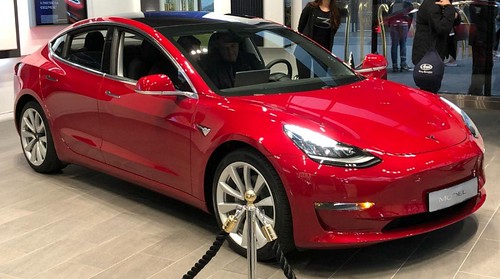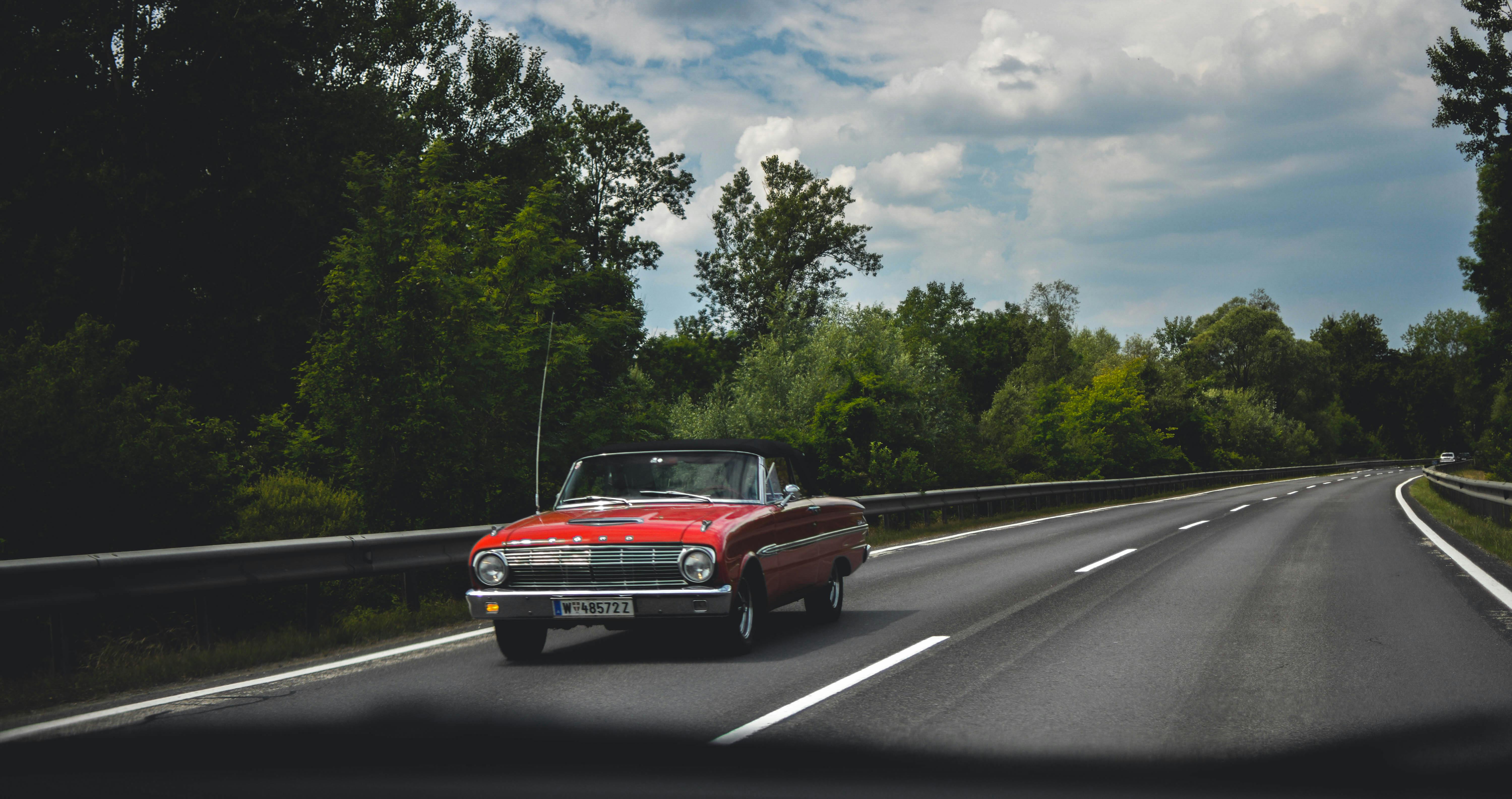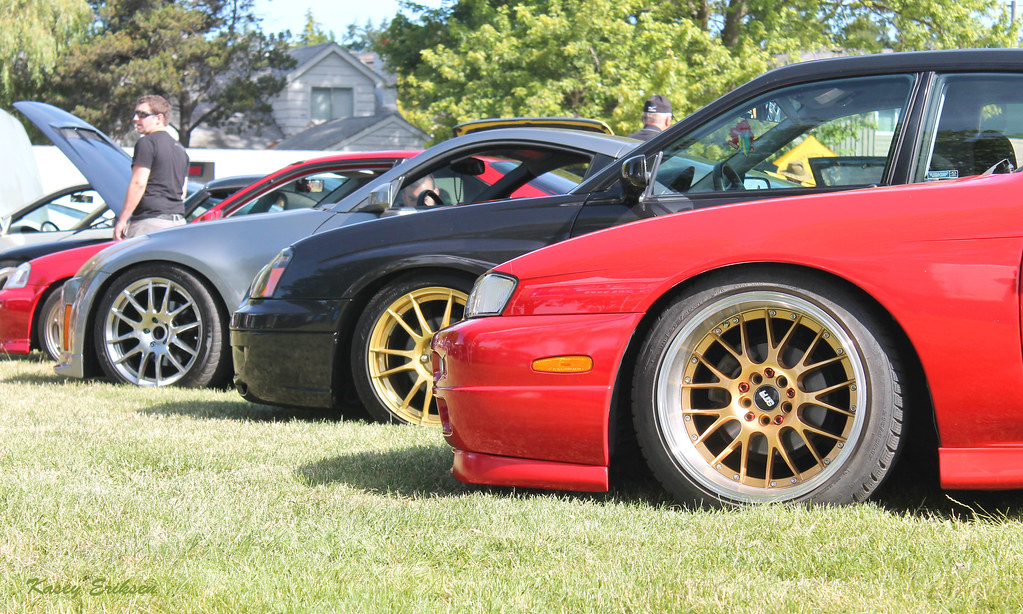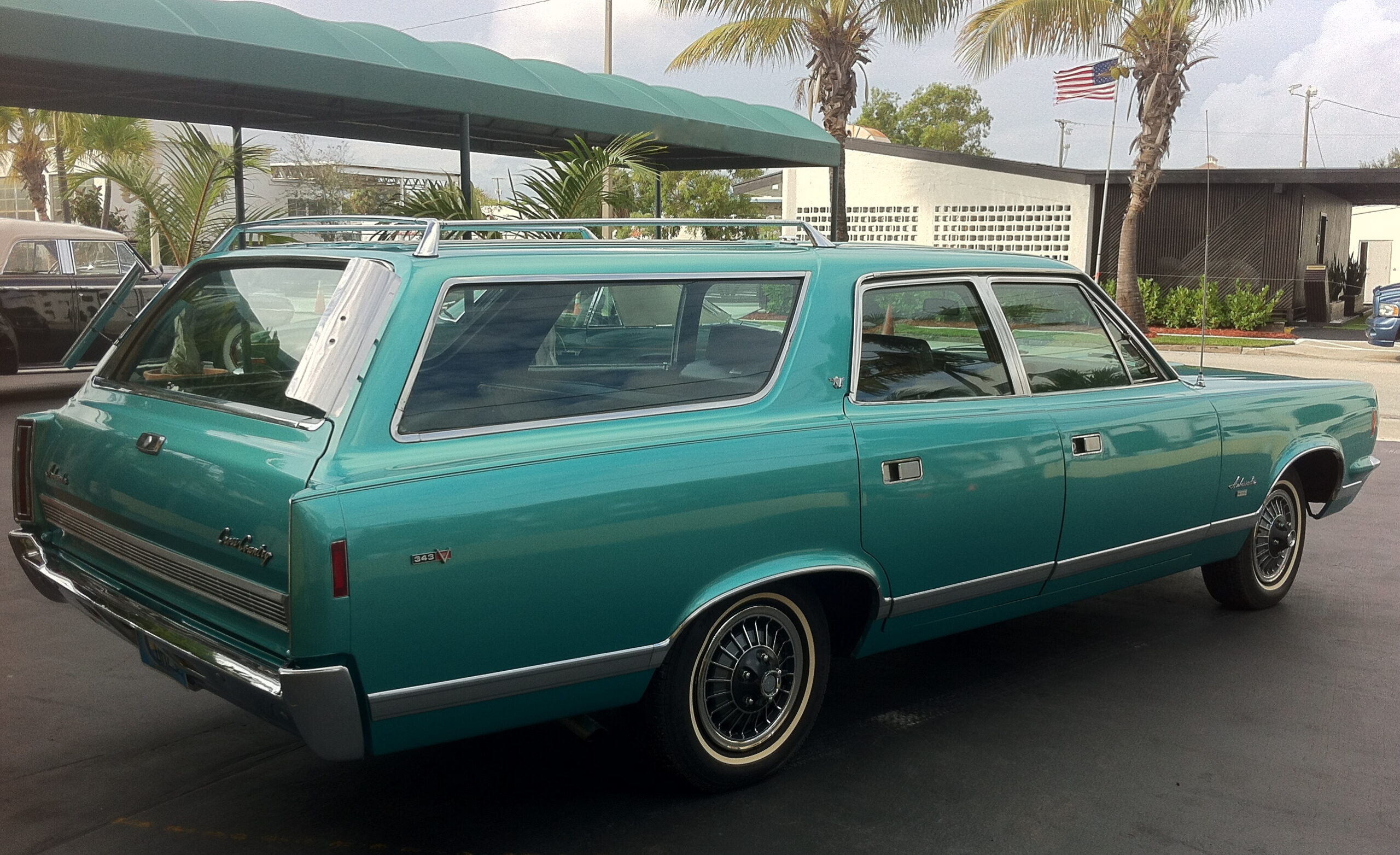
Oh, the station wagon. More than just a collection of steel, wood, and chrome, these magnificent beasts were the unsung heroes of countless American families. They weren’t just vehicles; they were rolling time capsules, brimming with the faint scent of popcorn spills, the excited barks of family dogs, and the quiet hum of long, drowsy highway miles that stretched into forever.
Before the SUV became the ubiquitous king of the suburban jungle, the classic wagon reigned supreme, defining the golden age of the American road trip. From the iconic wood-bodied ‘woodies’ that harked back to simpler times to the battleship-sized V8 cruisers that ate up pavement, and even the quirky foreign contenders that dared to challenge the status quo, these wagons offered us a front-row seat to evolving tastes, burgeoning technologies, and the ever-present dream of freedom found on the open road.
We’re talking about more than mere automotive history here; these are postcards from endless summers, from scenic detours taken on a whim, and from tire-tracked traditions that shaped generations. So, buckle in, grab your squished sandwiches, and prepare for a trip down memory lane as we retrace the journey of these family vacation staples, now cult collector classics, one iconic wagon at a time.
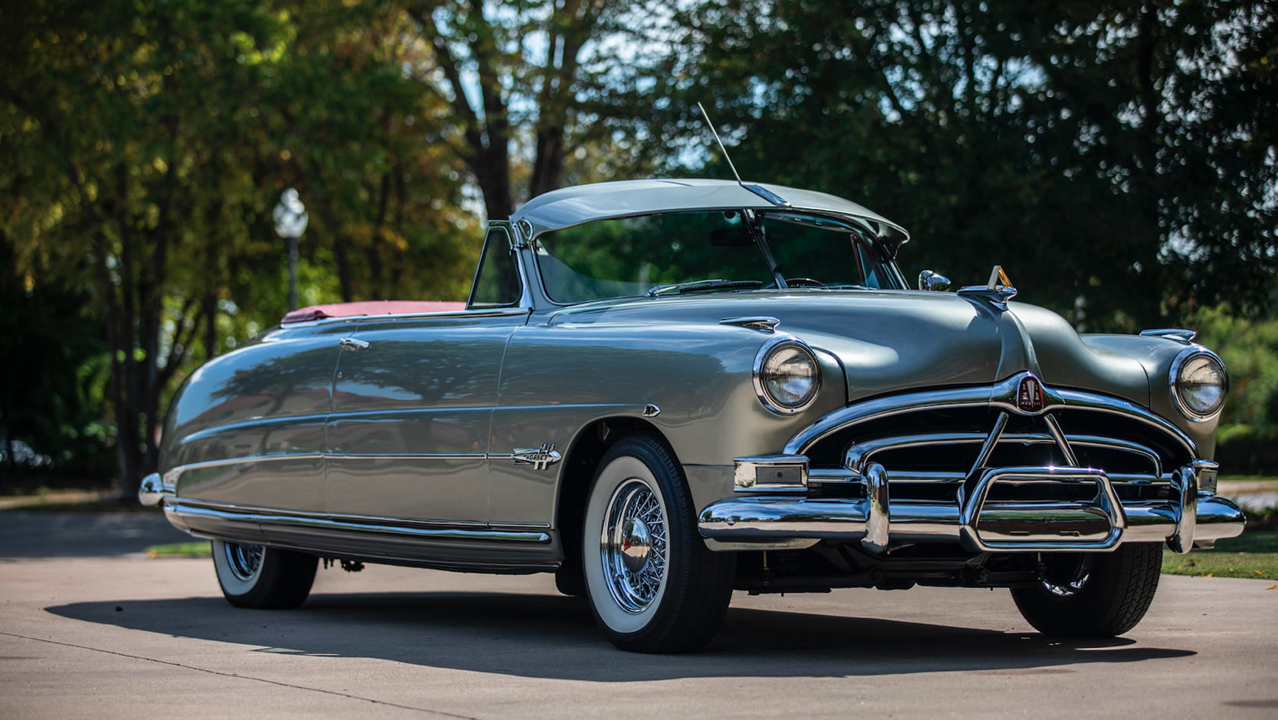
1. **Hudson Rambler: AMC’s Compact Trailblazer with Room to Spare**Let’s kick things off with a true innovator from AMC, the Hudson Rambler. This was a machine that defied expectations, packing an almost unbelievable amount of cargo space into a frame that was, by comparison, surprisingly compact. Imagine that: weekend camping trips and cross-country hauls suddenly became a whole lot easier, even for the entire crowd, without needing a behemoth to do it.
This wasn’t just smart engineering; it was a testament to AMC’s knack for delivering practical solutions. The Hudson Rambler carved its own niche, proving that you didn’t need to sacrifice maneuverability for utility. It was the kind of wagon that whispered, ‘Yeah, we can fit it all,’ while still being able to navigate tighter spots than its gargantuan counterparts.
It was a compact trailblazer, really, laying some groundwork for what family haulers could be. This wagon wasn’t about flashy excess; it was about smart design, making it a beloved companion for families who valued efficiency and genuine usable space for all their adventures, big or small. You’d be hard-pressed to find a more honest interpretation of ‘room to spare’ in a compact package from that era.
Car Model Information: 2019 Lexus GX 460 Premium
Name: Nash Rambler
Caption: 1952 Nash Rambler Custom station wagon
Manufacturer: Nash Motors,American Motors Corporation
Production: 1950–1955, and 1958-1960
Assembly: United States,Boeing Satellite Development Center,Canada
Layout: Front-engine, rear-wheel drive layout
Successor: Rambler American
Class: Compact car
Designer: Pininfarina
Categories: AMC vehicles, All articles with dead external links, Articles with dead external links from July 2025, Articles with permanently dead external links, Articles with short description
Summary: The Nash Rambler is a compact car manufactured and marketed by the Nash Motors division of Nash-Kelvinator Corporation for model years 1950-1954. It has a front-engine, rear-wheel-drive layout with sedan, station wagon, and fixed-profile convertible body styles.
In a marketing breakthrough, Nash successfully established the compact market segment by using the Rambler’s size and an upscale complement of features and equipment as its unique selling proposition: small and economical, but also luxurious.
When Nash-Kelvinator merged with the Hudson Motor Car Company in 1954, the Rambler became a product of the resulting American Motors Corporation (AMC), which in a rare feat, subsequently reintroduced the Rambler for model years 1958-1960. The Rambler was manufactured in Kenosha, Wisconsin over its two separate production runs.
Get more information about: Nash Rambler
Buying a high-performing used car >>>
Brand: AMC Model: Hudson Rambler
Price: $30,991 Mileage: 72,932 mi.

2. **DeSoto Powermaster: The Chrome-Laden Cruiser with Every Option**Next up, we’ve got a real stunner, the 1953 DeSoto Powermaster. This wasn’t just a wagon; it was a statement. Delivering a robust 116 horsepower, it packed enough punch for the highway, but that was just the beginning. This bad boy came loaded with more gadgets and gizmos than a 1950s kitchen, making it the ultimate fancy-hauler of its day.
We’re talking about luxury features that truly set it apart: power steering to make those long drives a breeze, those quintessential whitewall tires that screamed class, and even a Continental spare tire, just because. The Powermaster was designed for families who wanted it all, who appreciated a bit of chrome and comfort alongside their cargo space.
It embodied an era of American optimism, where even the family wagon could be a showcase of technological advancement and aesthetic flair. The DeSoto Powermaster wasn’t just about getting from A to B; it was about doing it with swagger, ensuring every journey felt a touch more special, a bit more sophisticated. It’s a testament to a time when even utilitarian vehicles had a healthy dose of pizzazz.
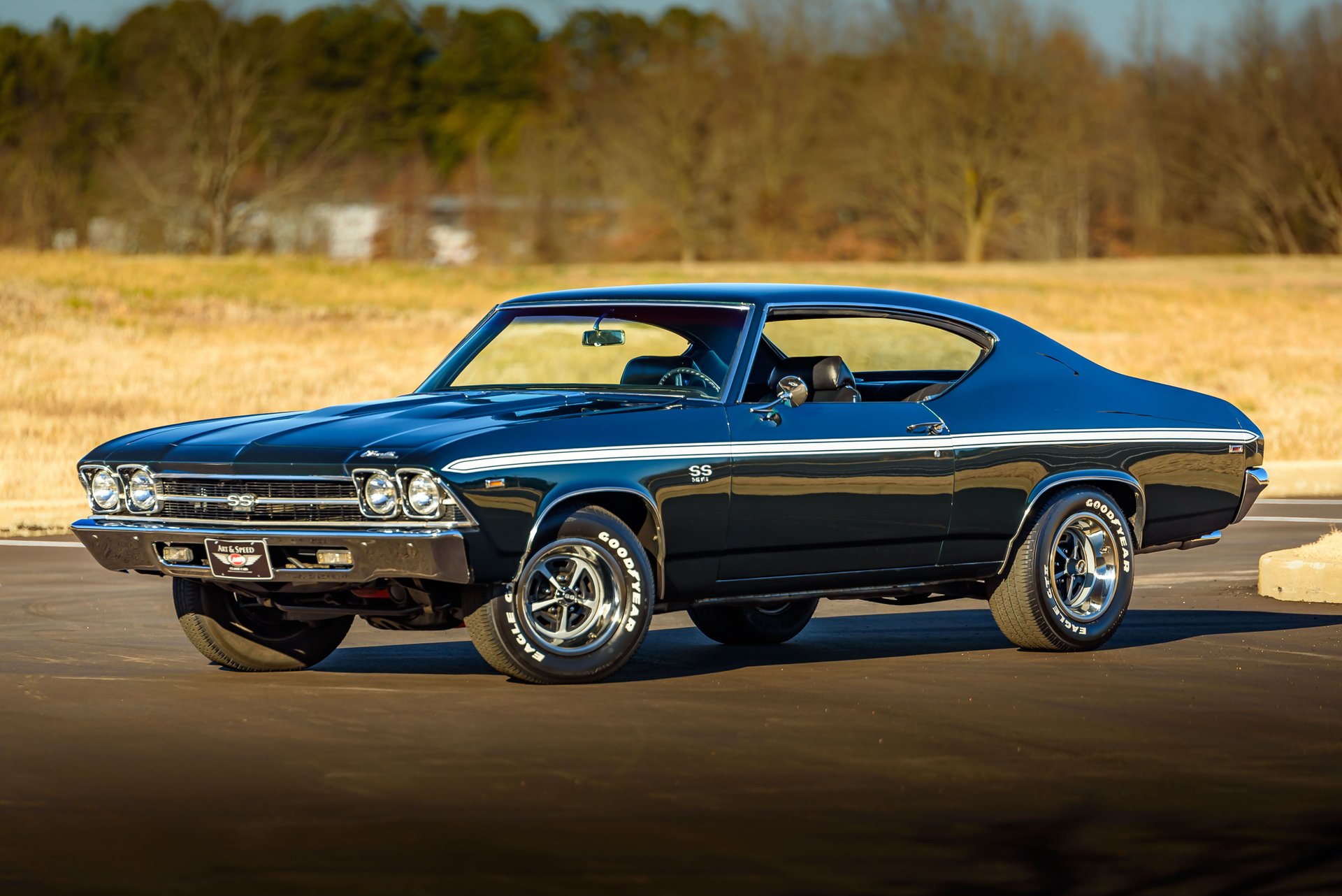
3. **Chevelle Concours Estate: Chevrolet’s Versatile Wagon for All the Family Shenanigans**Ah, the Chevelle Concours Estate. This Chevrolet wagon was a true workhorse, a chameleon of versatility that adapted to whatever family shenanigans were thrown its way. Available with either two or four doors and boasting flashy trim, it cemented its place as a staple for over a decade of American vacations, reliably ferrying families and their memories.
Inside, this wasn’t just a car; it was a mobile entertainment center. Think back to those endless backseat card games, the epic snack spills that became part of the carpet, and the general controlled chaos that only a family road trip could bring. The Concours Estate absorbed it all, a silent witness to countless childhood adventures and parental patience tests.
It perfectly captured the spirit of American family travel, blending practicality with a dash of style. The Chevelle wagon was a dependable partner, whether it was a quick run to the grocery store or a cross-country odyssey. Its longevity and widespread appeal speak volumes about its enduring design and its ability to meet the diverse needs of the American household for generations.
Car Model Information: 2019 Lexus GX 460 Premium
Name: Chevrolet Chevelle
Caption: 1970 Chevrolet Chevelle SS 396 Sport Coupe
Manufacturer: Chevrolet
Production: 1963–1977
ModelYears: 1964–1977
Class: Mid-size
Platform: GM A platform (RWD)
Layout: FR layout
Successor: Chevrolet Malibu
Categories: 1970s cars, All articles needing additional references, All articles that may contain original research, All articles with specifically marked weasel-worded phrases, All articles with unsourced statements
Summary: The Chevrolet Chevelle is a mid-sized automobile that was produced by the Chevrolet division of General Motors (GM) in three generations for the 1964 to 1977 model years. Part of the GM A-body platform, the Chevelle was one of Chevrolet’s most successful nameplates. Body styles included coupes, sedans, convertibles, and station wagons. The “Super Sport” versions were produced through the 1973 model year and Lagunas from 1973 through to 1976.
After a four-year absence, the El Camino was reintroduced as part of the new Chevelle lineup in 1964.
From 1964 to 1969, GM of Canada sold a modified version of the Chevelle that included a Pontiac-style grille, and a LeMans instrument panel, marketed as the Beaumont.
The Malibu was the top-of-the-line model to 1972, and completely replaced the Chevelle nameplate starting with the redesigned, and downsized 1978 model year.
Get more information about: Chevrolet Chevelle
Buying a high-performing used car >>>
Brand: Chevrolet Model: Chevelle Concours Estate
Price: $30,991 Mileage: 72,932 mi.
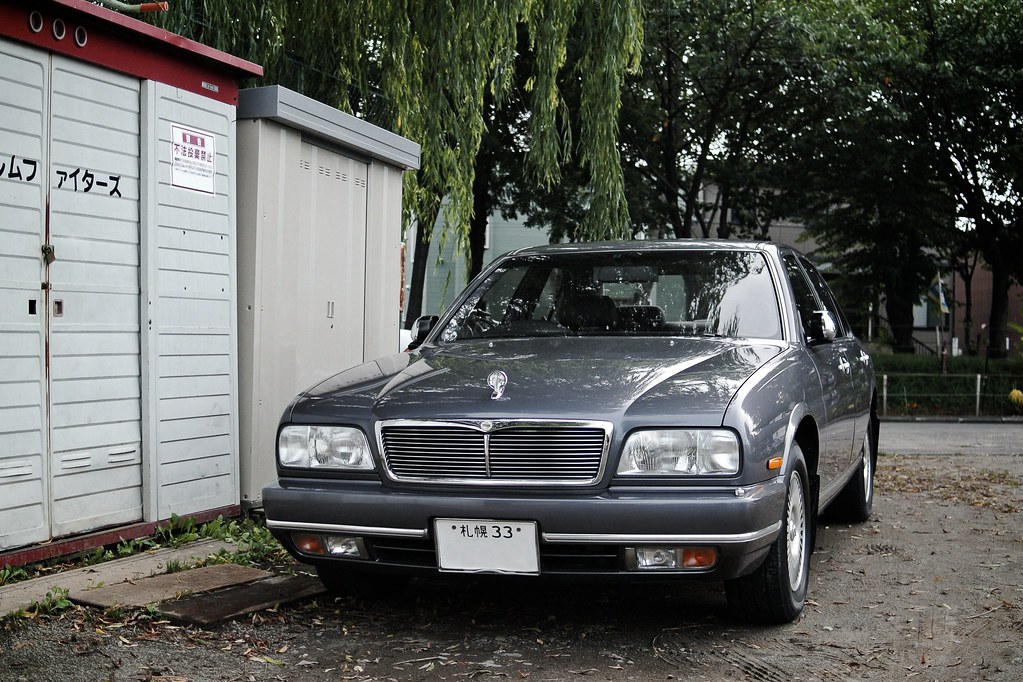
4. **Plymouth Power: Depression-Era Ingenuity on Four Wheels**Shifting gears back in time, let’s talk about the Plymouth station wagon, a vehicle that epitomized Depression-era ingenuity. This was the always-reliable machine that kept American dreams humming, even through the challenging 1940s. It wasn’t about flash; it was about getting the job done, day in and day out, with unwavering consistency.
What made it tick? Features like hydraulic brakes, which were a significant step forward for safety and stopping power, and lightweight aluminum pistons, contributing to efficiency and performance. These weren’t mere technical specs; they were crucial elements that made the Plymouth wagon a dependable backbone for families navigating tough economic times.
This wagon wasn’t just transportation; it was a symbol of resilience, a testament to American grit and innovation when it mattered most. It proved that practicality and robustness could be packaged in an affordable, accessible form, serving the essential needs of families without fanfare, just pure, unadulterated reliability. A true hero of the highway, born out of necessity.
Car Model Information: 2019 Lexus GX 460 Premium
Categories: 1950s cars, 1960s cars, 1970s cars, All Wikipedia articles written in American English, Articles with short description
Summary: The Plymouth Suburban is a station wagon produced from 1949 until 1978.
Get more information about: Plymouth Suburban
Buying a high-performing used car >>>
Brand: Plymouth Model: station wagon
Price: $30,991 Mileage: 72,932 mi.

5. **Pontiac Grand Safari: Long Roof, Wood Panel, Maximum Suburban Swagger**Now, for a wagon that truly understood the art of the entrance: the Pontiac Grand Safari. This wasn’t just a long roof; it was a declaration. That iconic faux wood paneling wasn’t just a style choice; it was a bold statement that declared, without a shadow of a doubt, that you had arrived. And you probably arrived with all the groceries that wouldn’t even fit in the neighbors’ cars, because, well, you had a Grand Safari.
This wagon screamed suburban swagger, a luxurious cruiser designed to make an impression. It blended the practical needs of family hauling with an undeniable sense of upscale flair. The Grand Safari didn’t shy away from being noticed; it embraced it, turning heads with its distinctive presence and ample proportions.
It was a dream machine for families who wanted comfort, capacity, and curb appeal all rolled into one. The Grand Safari represented a golden era of American automotive design where even family-oriented vehicles were imbued with personality and a generous helping of style, proving that practical could also be profoundly plush. It truly earned its ‘Grand’ moniker.
Car Model Information: 2019 Lexus GX 460 Premium
Name: Pontiac Grand Safari
Caption: 1972 Pontiac Grand Safari
Assembly: Pontiac Assembly,Pontiac, Michigan,United States
Manufacturer: Pontiac (automobile)
Production: 1971–1978
Class: Full-size car
BodyStyle: station wagon
Layout: Front-engine, rear-wheel-drive layout
Related: Buick Estate,Oldsmobile Custom Cruiser
Predecessor: Pontiac Bonneville#Fourth generation (1965–1970)
Successor: Pontiac Bonneville#Sixth generation (1977–1981)
Categories: 1970s cars, Articles with short description, Cars introduced in 1971, Pontiac vehicles, Short description is different from Wikidata
Summary: The Pontiac Grand Safari was Pontiac’s top-of-the-line full-size station wagon offered from 1971 to 1978. The Grand Safari used the grille and interior trim of the Bonneville and Grand Ville passenger car series, and most (but not all) examples were trimmed with woodgrain paneling on the sides and tailgate.
Get more information about: Pontiac Grand Safari
Buying a high-performing used car >>>
Brand: Pontiac Model: Grand Safari
Price: $30,991 Mileage: 72,932 mi.

6. **Volvo 244/245: Swedish Durability, Wagon Edition**From American excess to Swedish sensibility, we journey to the Volvo 244 and its legendary wagon twin, the 245. These weren’t just cars; they became a byword for family safety and surefooted reliability across both American and European roads for a solid two decades. In an era where some cars felt disposable, the Volvo was built to last, often outliving its owners’ expectations.
This was the sensible choice, the intelligent option for families who prioritized peace of mind above all else. Its reputation for durability wasn’t just marketing; it was earned through countless miles and harsh conditions. Parents trusted Volvo, and the 245 wagon delivered that trust in spades, becoming a steadfast companion on daily commutes and epic family road trips alike.
The iconic boxy design, often mocked by some, was actually a testament to its practical nature and uncompromising safety standards. It offered abundant interior space and a commanding view of the road, proving that thoughtful engineering and rugged construction could make a vehicle not just reliable, but truly beloved. The Volvo 245 wagon wasn’t flashy, but it was profoundly dependable, and for many, that was worth more than gold.

7. **Datsun 120Y: The Oil Crisis-Era Family Gas Saver**As the world grappled with the oil crisis, a new kind of hero emerged on the automotive scene: the Datsun 120Y wagon. This unassuming little marvel offered a compelling blend of dependability and thrift, quickly becoming the unheralded backbone of countless 1970s road trip albums. It was the smart choice when gas prices started biting, proving that efficiency didn’t have to mean sacrificing family utility.
This wasn’t a powerhouse, but it was honest. The 120Y wagon delivered what families needed: reliable transportation that wouldn’t drain their wallets at the pump. It wasn’t about making a grand statement; it was about making practical sense in a changing economic landscape, endearing itself to families with its no-nonsense approach and consistent performance.
It perfectly encapsulated the shift towards more economical vehicles without abandoning the core functionality of a station wagon. The Datsun 120Y wagon might not have the same flashy legacy as some of its V8-powered counterparts, but its quiet competence and significant contribution to family travel during a challenging era certainly earn it a spot in the pantheon of forgotten greats.
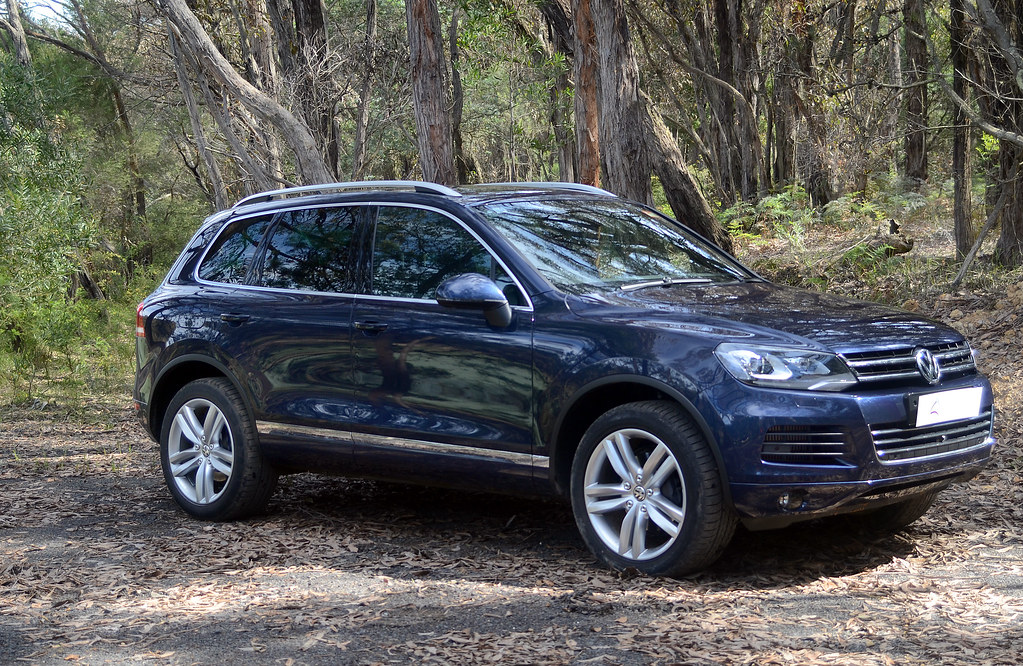
8. **Cavalier Wagon: Chevrolet’s Brown-Clad 80s Family Staple**Closing out our first half is the Chevrolet Cavalier Wagon, a truly unsung hero of the 1980s. Often clad in that quintessential brown hue that defined the decade, this boxy wagon was the go-to for budget-minded families across America. It wasn’t glamorous, but it was honest, reliable, and fundamentally practical – exactly what many families needed.
This was the origin point of a million “Are we there yet?” choruses, the vehicle that shuttled kids to soccer practice, family vacations, and countless errands. Its straightforward design and accessible price point made it a ubiquitous presence, a true workhorse that simply got the job done without complaint or pretension. The Cavalier wagon was the definition of everyday utility.
It may not be remembered for its thrilling performance or groundbreaking style, but the Cavalier Wagon holds a special place in the hearts of those who grew up with it. It represented dependable, affordable transportation during an era of changing automotive landscapes, a testament to Chevrolet’s ability to deliver a functional family vehicle that quietly facilitated the rhythm of American life. Sometimes, being the unsung hero is the most important role of all.
We’ve already zoomed through some truly iconic machines that set the stage for family road-tripping greatness. Now, buckle up again, because we’re about to shift into high gear and explore the wilder, more opulent, and downright adventurous side of station wagon history. Get ready for some serious personality, because these next vehicles weren’t just about utility; they were about making a statement, whether it was through bespoke luxury, groundbreaking design, or a fierce spirit of exploration.
Car Model Information: 2019 Lexus GX 460 Premium
Name: Chevrolet Cavalier
Manufacturer: Chevrolet
Production: 1981–2005,2016–2021 (China)
ModelYears: 1982–2005,2016–2021 (China),2019–2025 (Mexico)
Class: Compact car
Predecessor: Chevrolet Monza
Successor: Chevrolet Cobalt
Platform: GM J platform
Layout: Front-engine, front-wheel-drive
Categories: 1990s cars, 2000s cars, 2010s cars, All Wikipedia articles needing clarification, All accuracy disputes
Summary: The Chevrolet Cavalier is a line of compact cars produced by Chevrolet. Serving as the replacement of the Chevrolet Monza, the Cavalier was the second Chevrolet model line to adopt front-wheel drive. Three versions of the Cavalier have been sold, including three generations sold in North America from model years 1982 to 2005, a version produced by SAIC-GM for China from 2016 to 2021, and a SAIC-GM version produced for Mexico since the 2019 model year.
The Cavalier was among the inaugural vehicles of the GM J platform. One of the first “world cars” of General Motors, the J platform was developed for use by each North American GM division (with the exception of GMC), alongside international models for Opel, Vauxhall, and Holden. Though sharing chassis underpinnings, J-body cars from Europe and Australia used slightly different body designs and different powertrains; in Europe, the Vauxhall Cavalier and Opel Ascona were marketed as mid-size cars. Initially a divisional counterpart of the Buick Skyhawk, Cadillac Cimarron, Oldsmobile Firenza, and Pontiac J2000, the Cavalier was primarily marketed alongside the Pontiac Sunbird (renamed the Pontiac Sunfire for 1995).
The 1982–2005 Cavalier was produced by multiple GM facilities across North America; all models from the 1990s on were made at Lordstown Assembly, which became synonymous with the Cavalier and compact Chevrolet models in general from the earlier Chevrolet Vega all the way to the Chevrolet Cruze. For 2005, the Chevrolet Cobalt replaced the model line in North America.
Get more information about: Chevrolet Cavalier
Buying a high-performing used car >>>
Brand: Chevrolet Model: Cavalier Wagon
Price: $30,991 Mileage: 72,932 mi.

9. **Ford Granada: Last Hurrah for Rear-Drive American Swagger**Ah, the Ford Granada wagon! This was a machine that proudly wore its 1980s heart on its sleeve. Ford’s Granada wagon was big, bold, and totally 80s—right down to its rear-drive layout and endless engine choices. It was the kind of wagon that felt substantial, a solid piece of American iron ready to eat up the miles with a distinct kind of cool that only the ’80s could deliver.
The Granada wasn’t just a carry-all; it represented an important chapter, serving as the last hurrah for the classic rear-drive American sedan architecture adapted into a family wagon. It stood firm in a changing automotive landscape, clinging to that traditional layout while still trying to keep pace with evolving family needs. This beast offered plenty of space, sure, but it also offered a driving experience that harked back to an earlier, perhaps simpler, era of American motoring.
It was a testament to a time when even practical family haulers maintained a certain level of straightforward robustness and a wide array of options to tailor it just right for your family’s adventures. For many, this Ford was the last bastion of that big, bold, rear-wheel-drive comfort, proving that you could still have a proper American highway cruiser wrapped in a family-friendly package, before front-wheel-drive became the absolute norm.
Car Model Information: 1978 Ford Granada
Name: Ford Granada
Caption: Ford Granada Ghia (Mk II)
Manufacturer: Ford of Europe
Production: Cologne Body & Assembly
Class: Executive car
Layout: Front-engine, rear-wheel-drive layout
Predecessor: Ford Zephyr,Ford P7
Successor: Ford Scorpio,Hyundai Grandeur
Categories: 1970s cars, 1980s cars, 1990s cars, All Wikipedia articles written in British English, Articles with short description
Summary: The European Ford Granada is an executive car manufactured by Ford Europe from 1972 until 1994.
The first-generation model was produced from 1972 to 1976 at Ford’s German factory in Cologne and at its British factory in Dagenham. In 1976, production switched entirely to Germany. The original version was replaced in 1977 by a second-generation model which was produced until 1985. From 1985 to 1994, the Granada name was used, in the United Kingdom and Ireland only, for a third-generation model which was sold in other European markets as the Ford Scorpio and in North America as the Merkur Scorpio.
Get more information about: Ford Granada (Europe)
Buying a high-performing used car >>>
Brand: Ford Model: Granada
Price: $10,888 Mileage: 34,396 mi.
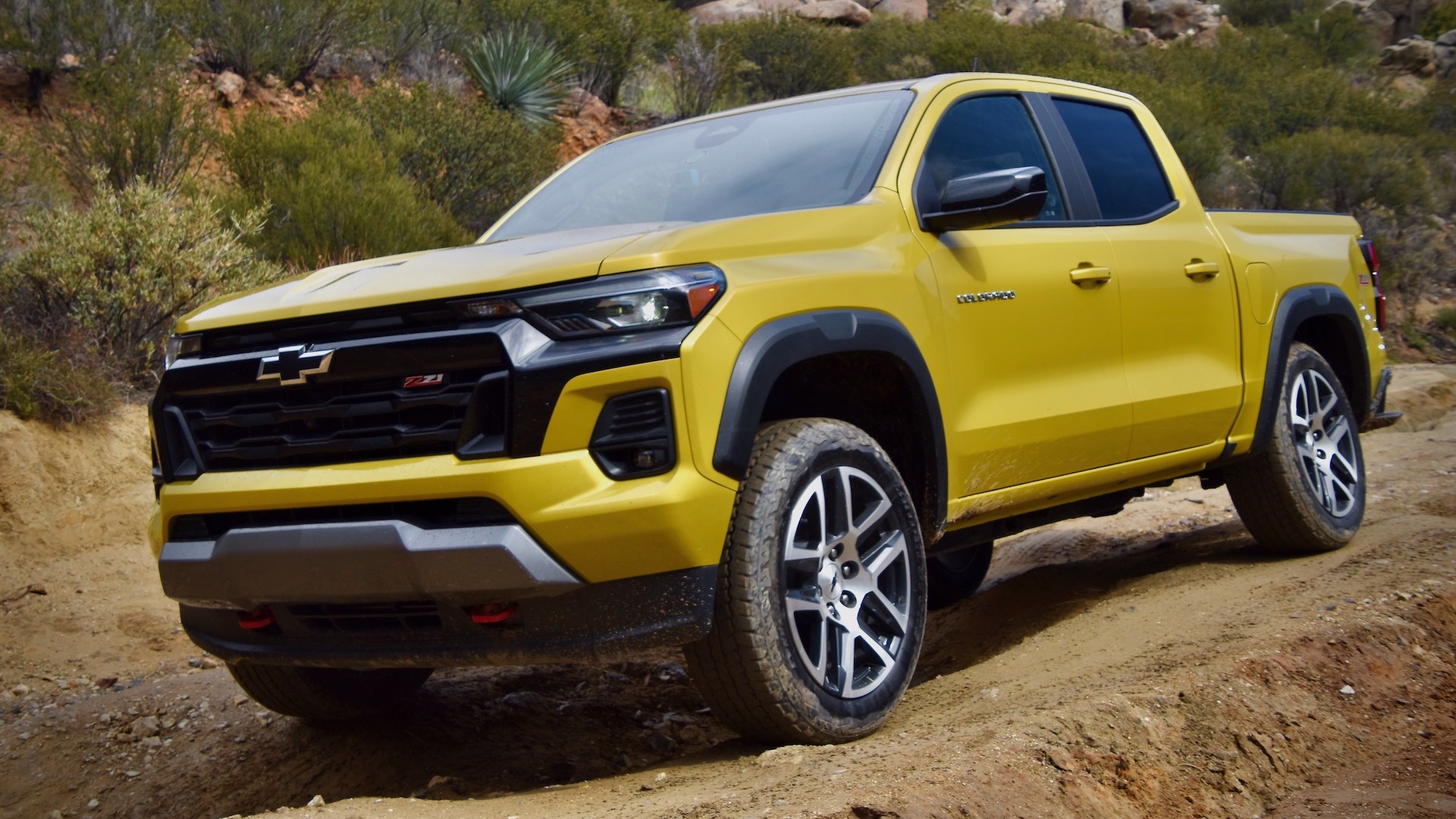
10. **Chevy Caprice Classic: The Plush King of Highway Cruisers**If you wanted to cruise in ultimate comfort in the late 70s, the 1978 Chevy Caprice Classic Estate Wagon was practically royalty. This wasn’t just a car; it was a land yacht designed for the most luxurious family vacation possible. Spacious and smooth, the 1978 Caprice was the last word in family vacation comfort—kingsize bench seats and all, making every mile feel like first class.
This magnificent machine truly redefined roominess. Renowned for its cavernous interior and plush ride, the 1978 Chevrolet Caprice Estate Wagon was a true giant of the road. It could seat up to nine passengers, making it the go-to choice for big families or anyone who wanted to travel with friends, pets, and half their house. Those rear-facing third-row seats? They were legendary, becoming a favorite spot for kids during long drives, offering a unique perspective on the world zooming by.
Chevy equipped the Caprice Estate with a powerful V8 and all the latest creature comforts, from air conditioning that could chill an iceberg to power windows that made roadside McDonald’s orders a breeze. Its massive cargo area swallowed up luggage, sports gear, and groceries with ease, symbolizing American abundance and family togetherness. It was more than a vehicle; it was a rolling embodiment of the American dream, a plush palace on wheels built for unforgettable journeys.
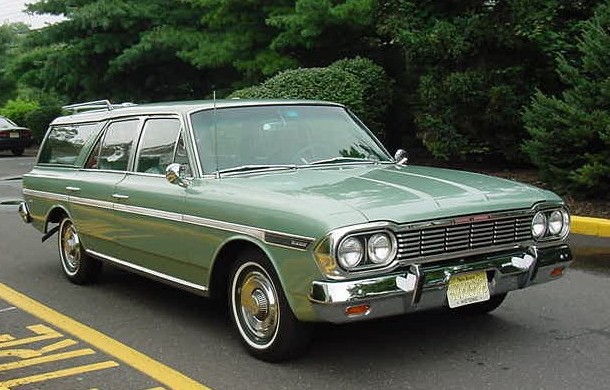
11. **1968 Cadillac Wagon: Where Luxury and Luggage Met (and High-Fived)**Alright, now let’s talk about a wagon that truly broke the mold of utilitarian family transport: the 1968 Cadillac Wagon. Forget mere hauling; this was about doing it with unparalleled style, speed, and undeniable prestige. Want speed, style, AND space? The 1968 Cadillac wagon let you bring both the picnic basket and a powder blue land yacht to the park. Talk about arriving in style!
This wasn’t some factory production line offering; a Cadillac wagon of this era often started life as a sedan before being custom-bodied into an estate, making each one a truly bespoke luxury model. It combined the opulent comfort and powerful engines Cadillac was famous for with the sheer practicality of a wagon. Imagine cruising down the highway, commanding respect in a vehicle that dared to defy categorization—a luxury sedan that just happened to have an expansive cargo hold.
It truly exemplified a moment where families, or at least the most affluent ones, didn’t have to compromise. You could have your high-society appearance and your weekend adventure gear, all neatly packaged in one breathtaking automobile. This Cadillac wagon wasn’t just transport; it was a statement of success and an embrace of both the finer things in life and the open road.
Car Model Information: 2014 Cadillac CTS Luxury
Name: Cadillac CTS
Caption: Second-generation CTS
Manufacturer: General Motors
Production: 2002–2019
ModelYears: 2003–2019
Class: Mid-size,luxury car
Predecessor: Cadillac Catera
Successor: Cadillac CT5
Categories: 2010s cars, All-wheel-drive vehicles, All Wikipedia articles written in American English, All articles with dead external links, All articles with unsourced statements
Summary: The Cadillac CTS is a luxury car, manufactured and marketed by General Motors from 2003 until 2019 across three generations.
Initially available as a 4-door sedan using the GM Sigma platform, GM offered the second generation CTS in 4-door sedan, 2-door coupe, and 5-door sport wagon, and the third generation as a sedan, using a stretched version of the GM Alpha platform. High performance sedan variants were offered for each generation, as the CTS-V—with wagon and coupe variants offered for the second generation.
In a 2003 report titled The 90 days that shaped Cadillac, Automotive News noted that the first generation CTS marked a $4B investment by General Motors to set a new course for Cadillac styling, introduce a new rear-drive platform, and importantly, re-establish the brand’s relevancy.
Wayne Cherry and Kip Wasenko designed the exterior of the first generation CTS, marking the production debut of a design language marketed as “Art and Science,” first used on the Evoq concept car. John Manoogian II directed the second generation CTS design, as initially conceived by Robert Munson. Bob Boniface and Robin Krieg designed the exterior of the third generation CTS.
The CTS ended production in 2019 and was replaced by the CT5, which shared its platform with the third and final generation of the CTS in addition to the smaller CT4.
Get more information about: Cadillac CTS
Buying a high-performing used car >>>
Brand: Cadillac Model: Wagon
Price: $9,997 Mileage: 102,941 mi.
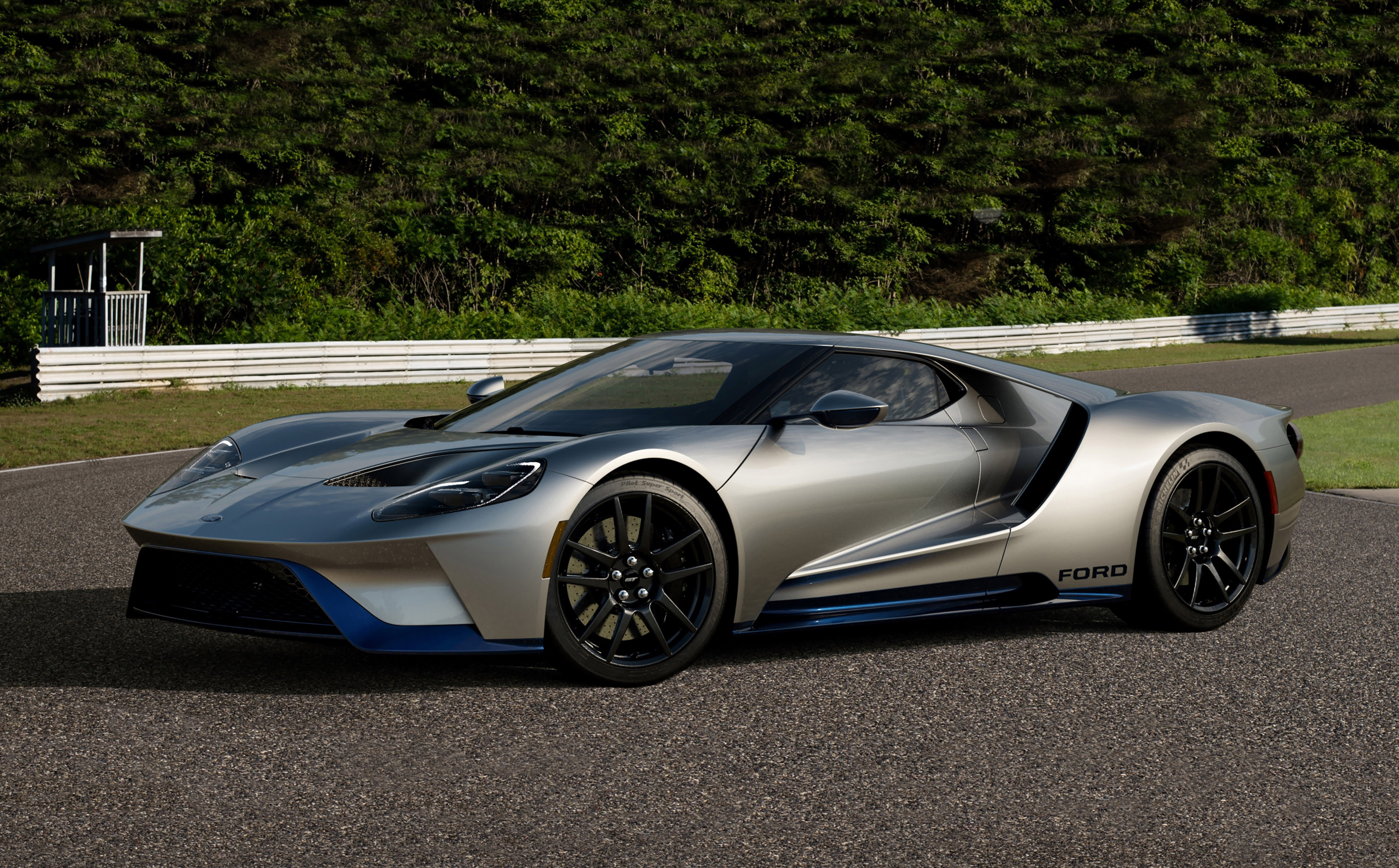
12. **Ford “Woodie”: A 1948 Last Call for the Full-Wood Wagon Era**Hold onto your hats, because we’re diving into pure Americana with the legendary 1948 Ford “Woodie.” This wasn’t just a vehicle; it was an artisan masterpiece, a rolling sculpture that harked back to an era of craftsmanship and bespoke beauty. The legendary 1948 “woodie” blends V8 muscle and artisan bodywork—plus a crank starter, just in case the battery bailed at the lake. How’s that for old-school cool?
These glorious “woodies” were truly special, built with hand-crafted timber panels that gave them an undeniable charm and warmth. The 1948 model marked a significant point, representing a “last call” for the full-wood wagon era, as metal bodies soon became the standard. This blend of V8 power, offering robust performance, with genuine, hand-finished wood bodywork, made it a coveted sight then, and an even rarer gem today.
Just think of it: a sunny day, the family packed in, surfboards strapped to the roof, cruising down to the beach with that iconic timber shimmering in the sun. Ford’s 1939 Deluxe “woodie” even paired hand-built timber panels with a smooth V8, perfect for boardwalks and surfboards, a vision that continued through models like the ’48. It perfectly captured the essence of post-war optimism and the burgeoning American leisure culture, making every journey feel like a special occasion.
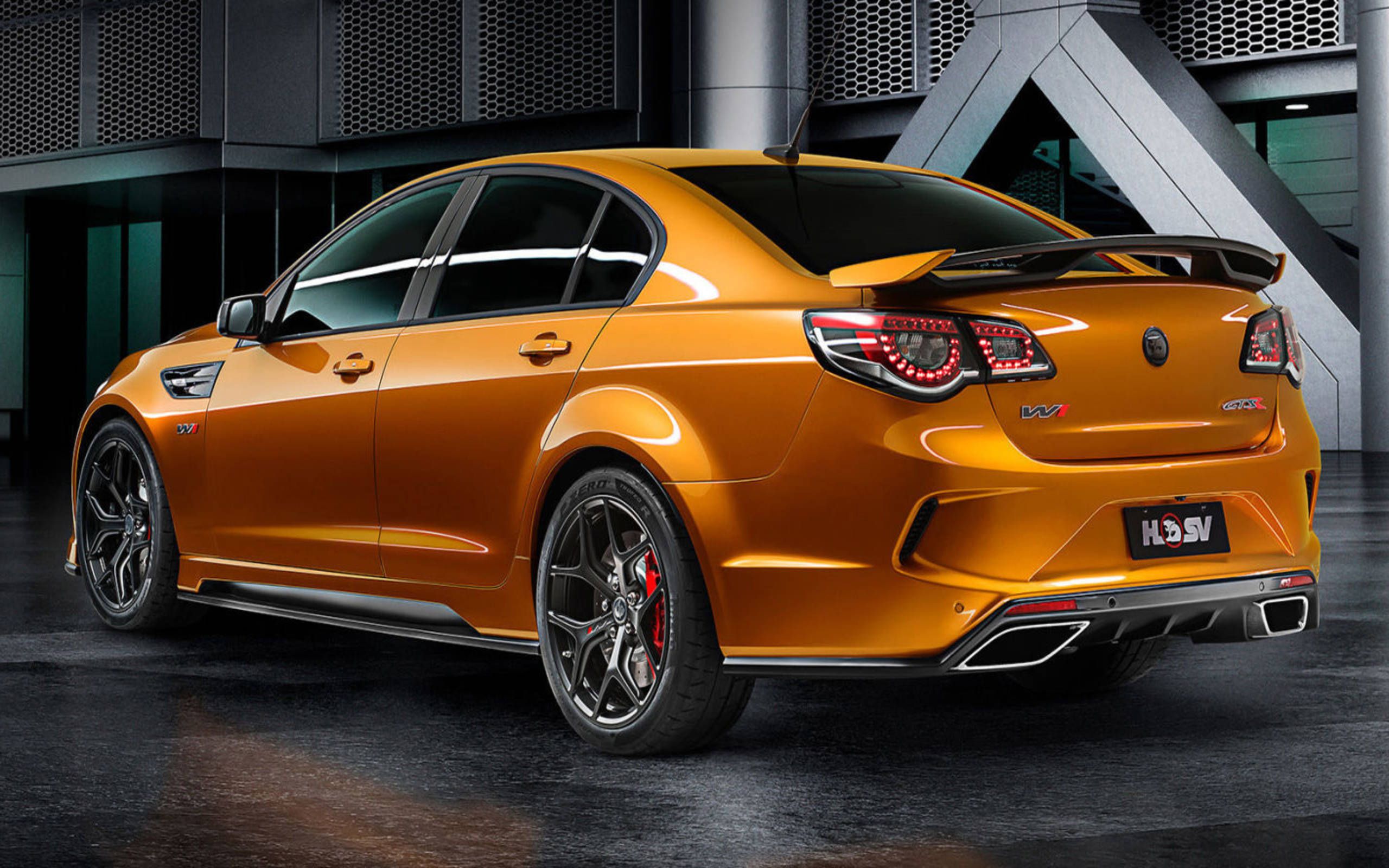
13. **Holden EH: Australian-Style Practicality, 1964 Edition**Let’s take a quick detour Down Under, shall we? Because Australian car culture, and their wagons, brought a distinctly rugged and practical flair to the global stage. The Holden EH wagon, from 1964, was a prime example, embodying Australian-style practicality with a unique character. The Holden EH brought the station wagon tradition Down Under, with six seats and real rear-wheel-drive thrills, ready for whatever the vast Australian landscape could throw at it.
Holden, as a brand, was all about building cars for Australian conditions – which often meant long distances, varied terrain, and a need for unwavering reliability. The EH wagon delivered on this, offering ample space with its six-seat configuration and the robust, engaging driving dynamics that come with rear-wheel-drive. It was a vehicle that wasn’t just built to transport; it was built to *explore*.
This particular Holden was part of a tradition that included other versatile Aussie wagons like the FJ, which saw just six coachbuilt units, making them more exclusive than many European counterparts, and the HG Kingswood, famous for its flexible seating combinations. The EH, much like the Falcon XL wagon that gave mid-century Aussie families freedom to roam, perfectly encapsulated the spirit of adventure and utilitarian style that defined Australian family motoring in the mid-20th century.
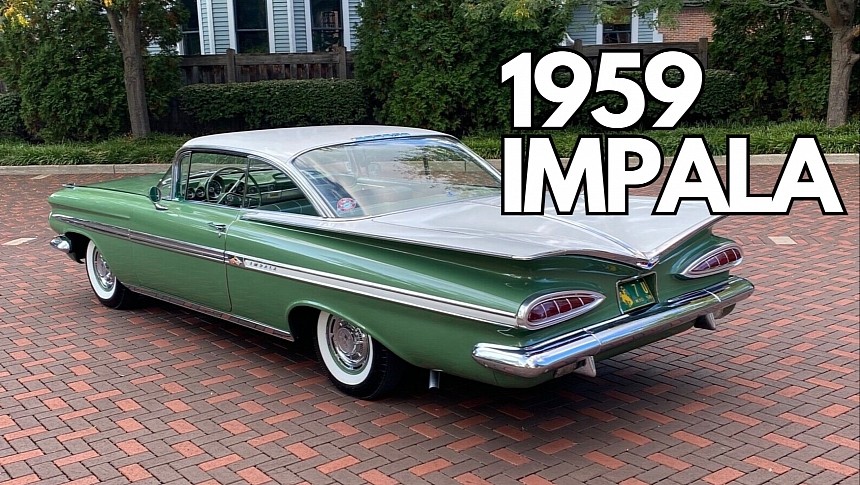
14. **1959 DeSoto Firesweep Explorer: Rare, Roomy, and Riding Into the Sunset**Prepare for a glimpse into automotive rarity with the 1959 DeSoto Firesweep Explorer. This wasn’t a common sight even back in its day, and today, it’s a true collector’s item, a testament to an era that was rapidly drawing to a close for the DeSoto brand. With only 1,179 units made, the 1959 DeSoto wagon is a rare, nine-passenger survivor—and a collectible cruiser from the end of an era. Talk about an exclusive ticket!
The Firesweep Explorer was more than just rare; it was a roomy, full-sized family hauler that offered generous space for up to nine passengers, a feature that was highly prized for large families or carpooling groups. It combined DeSoto’s distinctive Forward Look styling, with those dramatic fins and bold chrome, with the ultimate in family utility. It was a comfortable cruiser, perfect for those long cross-country treks.
Sadly, this magnificent wagon emerged during a tumultuous period for DeSoto, just before the brand’s eventual discontinuation. This makes the Firesweep Explorer a poignant artifact, a powerful and stylish reminder of what was and what might have been. It’s a collectible cruiser that truly rode into the sunset, carrying with it a piece of forgotten automotive grandeur.
Car Model Information: 2019 Lexus GX 460 Premium
Caption: 1958 DeSoto Firesweep 4-door Sportsman
Name: DeSoto Firesweep
Manufacturer: DeSoto (automobile)
Layout: FR layout
Production: [object Object]
Related: Chrysler Windsor,Dodge Coronet,Plymouth Belvedere
Predecessor: DeSoto Firedome
Aka: DeSoto Diplomat
Assembly: Los Angeles (Maywood) Assembly,United States,Australia
Class: Full-size
BodyStyle: Sedan (car)
Engine: 325 cuin
Abbr: V8 engine
Categories: Articles with short description, Cars introduced in 1957, Commons category link is on Wikidata, DeSoto vehicles, Short description is different from Wikidata
Summary: The DeSoto Firesweep is an automobile that was produced by DeSoto from 1957 through 1959.
Get more information about: DeSoto Firesweep
Buying a high-performing used car >>>
Brand: DeSoto Model: Firesweep Explorer
Price: $30,991 Mileage: 72,932 mi.

15. **Land Rover Series I: Off-Roading Royalty, Wagon-Style**Now, for a wagon that truly embraced the ‘adventurous’ side of family hauling, let’s talk about the 1957 Land Rover 107″ wagon. This wasn’t your typical suburban grocery-getter; this was off-roading royalty that just happened to have enough space for the whole crew. The 1957 Land Rover 107″ wagon tackled school runs and wild expeditions equally, earning legendary status in the off-road family hauler club. How’s that for versatility?
The Series I Land Rover was already an icon of rugged capability, but in wagon form, it offered a unique blend of go-anywhere spirit and practical family transport. Its hard-wearing interiors and robust construction, imbued with that undeniable “Land Rover DNA,” meant it could handle the daily grind of school runs with the same unflappable competence as it navigated muddy trails on a weekend adventure. This was a vehicle for families who didn’t just want to get to the destination; they wanted to conquer the journey, no matter how wild.
It carved out a niche as one of the most capable and revered off-road family haulers in history. While some wagons offered plush luxury, the Land Rover Series I offered genuine, uncompromised utility and the promise of endless exploration. It proved that a family vehicle could be both a dependable workhorse and an intrepid explorer, a true legend for generations of outdoor-loving families.
Car Model Information: 2019 Lexus GX 460 Premium
Caption: The first pre production Land Rover R01
Name: Land Rover series
Manufacturer: ubl
Successor: Land Rover Defender
Class: Off-road vehicle
Production: 1948–1985
Assembly: Solihull,England
Layout: Front engine, rear-wheel-drive layout
Categories: 1950s cars, 1960s cars, 1970s cars, 1980s cars, All-wheel-drive vehicles
Summary: The Land Rover Series I, II, and III , or simply the Land-Rover (commonly referred to as Series Land Rovers, to distinguish them from later models) are compact British off-road vehicles, produced by the Rover Company since 1948, and later by British Leyland. Inspired by the World War II jeep, it was the first mass-produced civilian four-wheel drive car with doors, and an available hard roof. Unlike conventional cars and trucks of the time, it used a sturdy fully box-welded frame. Furthermore, due to post-war steel shortage, and aluminium surplus, Land Rovers received non-rusting aluminium alloy bodies, favouring their longevity. In 1992, Land Rover claimed that 70% of all the vehicles they had built were still in use.
Most Series models feature leaf-spring suspension with selectable two or four-wheel drive (4WD), however Series I’s produced between 1948 and mid-1951 had constant 4WD via a freewheel mechanism, and the Stage 1 V8 version of the Series III featured permanent 4WD. All three models could be started with a front hand crank and had the option of front & rear power takeoffs for accessories.
After adding a long wheelbase model in 1954, Land Rover also offered the world’s first four / five door, 4WD off-road station wagon in 1956. Series Land Rovers and Defenders continually excelled in space utilization, offering (optional) three abreast seating in the seating rows with doors, and troop seating in the rear, resulting in up to seven seats in the SWB, and up to ten seats in the LWB models, exceeding the capacity of most minivans, when comparing vehicles of the same length.
Get more information about: Land Rover series
Buying a high-performing used car >>>
Brand: Land Rover Model: Series I
Price: $30,991 Mileage: 72,932 mi.
Read more about: Seriously Where Did They Go? 12 Iconic SUVs That Vanished From Our Highways: A MotorTrend Retrospective on Automotive History
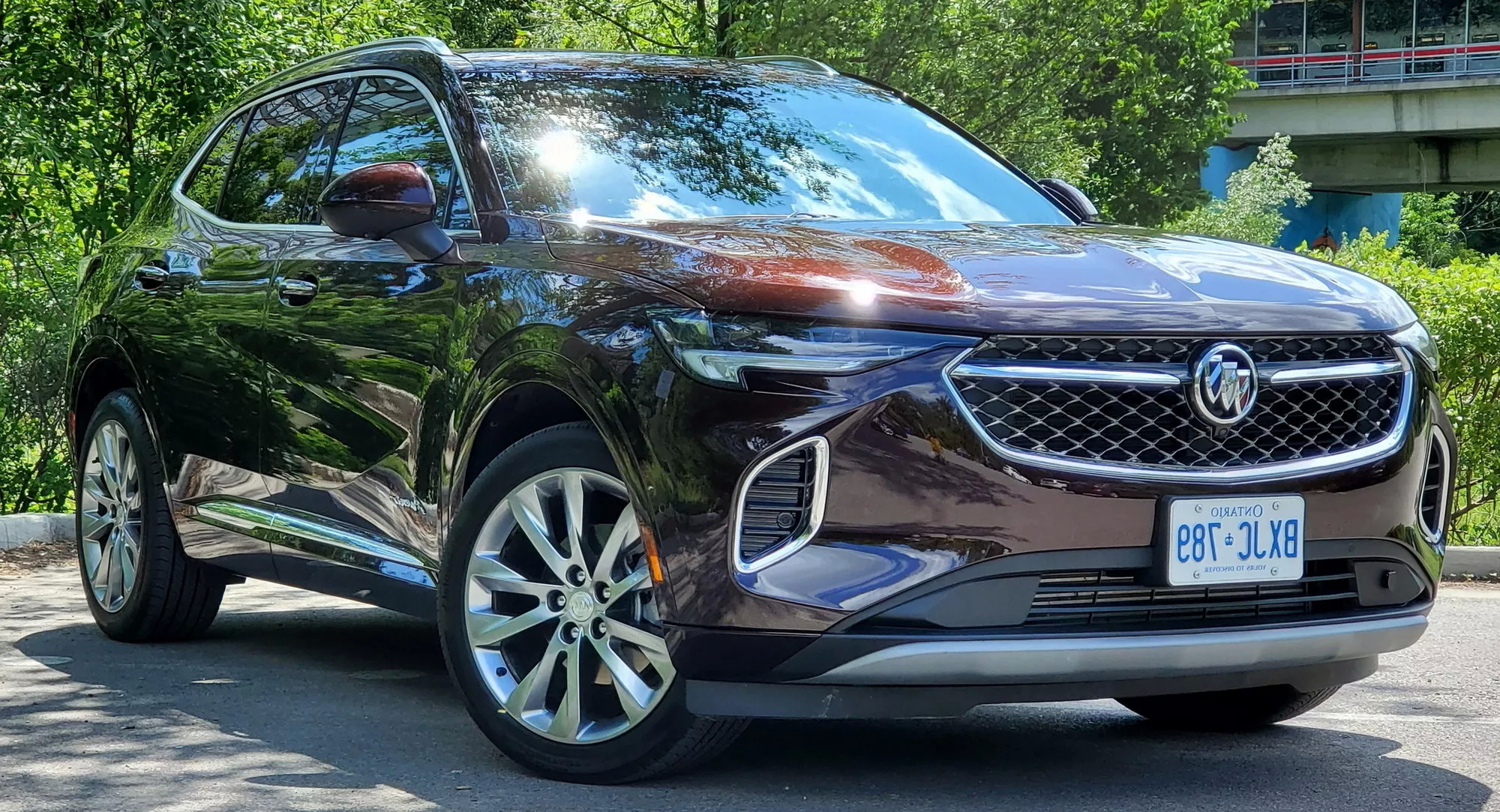
16. **Buick Super Estate: The Elegance of the “Woodie” Wagon Era**And finally, let’s cap off our nostalgic journey with a vehicle that epitomizes the elegance and bespoke craftsmanship of the classic wagon era: the Buick Super Estate. This wasn’t merely transportation; it was a rolling work of art, a perfect fusion of industrial design and traditional artisan skill. Part car, part cabinetmaking masterclass, the Buick Super Estate fused gleaming metal and genuine wood for coast-to-coast adventure style. Seriously, could it get any cooler?
The “woodie” wagons from Buick, like the Super Estate, were among the most refined and luxurious examples of their kind. They showcased incredible attention to detail, with genuine wood paneling expertly integrated into the gleaming metal bodywork. This created a vehicle that exuded class and sophistication, making every family outing, from a simple picnic to a cross-country adventure, feel like a grand tour.
Much like the 1964 Buick Sport Wagon, which delivered upscale touches like an extended wheelbase and “Skyroof” panels, the Super Estate emphasized comfort, quality materials, and a smooth, enjoyable ride. It represented a golden age of American automotive design where even practical vehicles were imbued with profound beauty and a generous spirit of adventure. The Buick Super Estate wasn’t just a wagon; it was a statement piece, a testament to a time when travel was an experience to be savored, and the family car was a cherished part of that journey.
—
Car Model Information: 2019 Lexus GX 460 Premium
Name: Buick Estate Wagon
Caption: #1977–1990
Manufacturer: Buick
Aka: Buick Super Estate,Buick Roadmaster Estate,Buick Special Estate,Buick Invicta Estate,Buick Electra Estate,Buick LeSabre Estate,Buick Century Estate,Buick Regal Estate
Production: 1940-1964,1970-1996
Class: Full-size
BodyStyle: station wagon
Layout: FR layout
Categories: 1970s cars, 1980s cars, 1990s cars, Articles with short description, Buick vehicles
Summary: Buick Estate is a nameplate that was used by the Buick division of General Motors, denoting its luxury full-size station wagon from 1940 to 1964 and from 1970 to 1996. The Estate nameplate was derived from the term country estate in wealthy suburban areas and estate car, the British term for a station wagon.
For much of its model life the Buick Estate was produced using GM B platform as the station wagon counterpart of Buick sedans; it was offered on the GM C platform from 1949–1953, then again from 1971–1976. With the exception of the prewar Buick Limited limousine, the Estate was the largest vehicle of the Buick line, combining the luxury features of Buick sedans with cargo-carrying capabilities. In line with other brands having a wagon-associated moniker, Estate became adopted by other Buick wagons (regardless of size), with the exceptions of the 1964–1972 Buick Sport Wagon and the 1982–1989 Buick Skyhawk station wagon.
Starting with model year 1947 until 1964, the Estate was offered as a station wagon on two model lines. When it returned in 1970, it was the senior station wagon to the Sport Wagon, then the name was again used on two different models in 1973 when the Sport Wagon was replaced with the intermediate-sized Buick Century Estate.
As the Cadillac Division did not offer a factory-produced station wagon in North America until 2010 (the Cadillac CTS Sport Wagon), the Buick Estate served as the flagship station wagon entry from General Motors, slotted slightly above its Oldsmobile divisional counterpart, the Oldsmobile Custom Cruiser beginning in 1971. Competing against the Chrysler Town & Country and the Mercury Colony Park, the Estate was originally produced as a wooden-body station wagon (“woodie”); from 1970 to 1996, nearly all examples were fitted with simulated woodgrain exterior trim (though technically optional). The 1996 Buick Roadmaster Estate (alongside its Chevrolet Caprice counterpart) was the full-size station wagon to remain in production and the last to offer exterior woodgrain trim. In 1976 American Motors Corporation introduced the Jeep Grand Wagoneer with similar passenger accommodation, luxury standard equipment and a simulated woodgrain appearance built on a dedicated chassis.
Following the 1996 model year, Buick discontinued the Roadmaster Estate and mid-size Century Estate station wagons, ending the use of the nameplate. Buick would not market another station wagon in the United States until 2018, rebranding the Opel Insignia as the Buick Regal TourX.
Get more information about: Buick Estate
Buying a high-performing used car >>>
Brand: Buick Model: Super Estate
Price: $30,991 Mileage: 72,932 mi.
As we pull the brakes on this wild ride through wagon history, it’s clear these weren’t just cars. They were partners in adventure, silent witnesses to countless family memories, and a tangible link to a bygone era of American freedom. Reflect on the golden age of travel, when spacious station wagons packed with luggage and laughter turned family road trips into unforgettable adventures. Before SUVs became the kings of the highway, American station wagons were the ultimate family road trip machines, packed with memories and adventure. These iconic vehicles carried generations to beaches, mountains, and grandma’s house, blending practicality with style. From wood-paneled classics to futuristic innovations, these wagons defined an era when the journey mattered as much as the destination, and the open road was an invitation to explore together. They might be “Gone but Not Forgotten” from our highways, but they live on in the stories and nostalgic hearts of millions.

